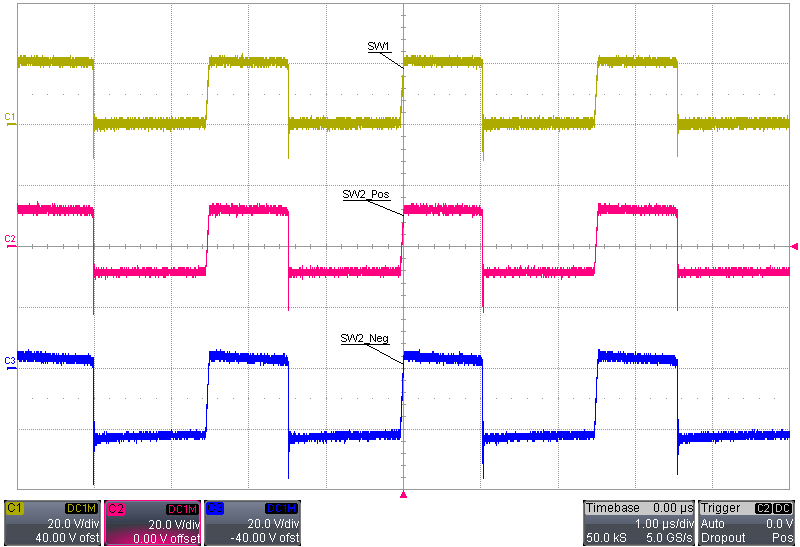TIDT293 October 2022
3.5 Dual-Output Power Supply
The board has a dual-output power supply providing a +12-V and –12-V rail for the pulse shaping and driver circuits. This uses a combined SEPIC and Cuk configuration with a single inductor at the input and coupled inductor at the outputs.
The following scope plot is the power supply switch nodes for a 9-V input. SW1 is probed at pin 1 of the LM5002 switch mode regulator. SW2_Pos is probed at the anode of D2 and SW2_Neg is at the anode of D4.
 Figure 3-10 LM5002, 9-V Input, 12-V Positive and Negative Dual-Output Power Supply Switch Nodes
Figure 3-10 LM5002, 9-V Input, 12-V Positive and Negative Dual-Output Power Supply Switch Nodes